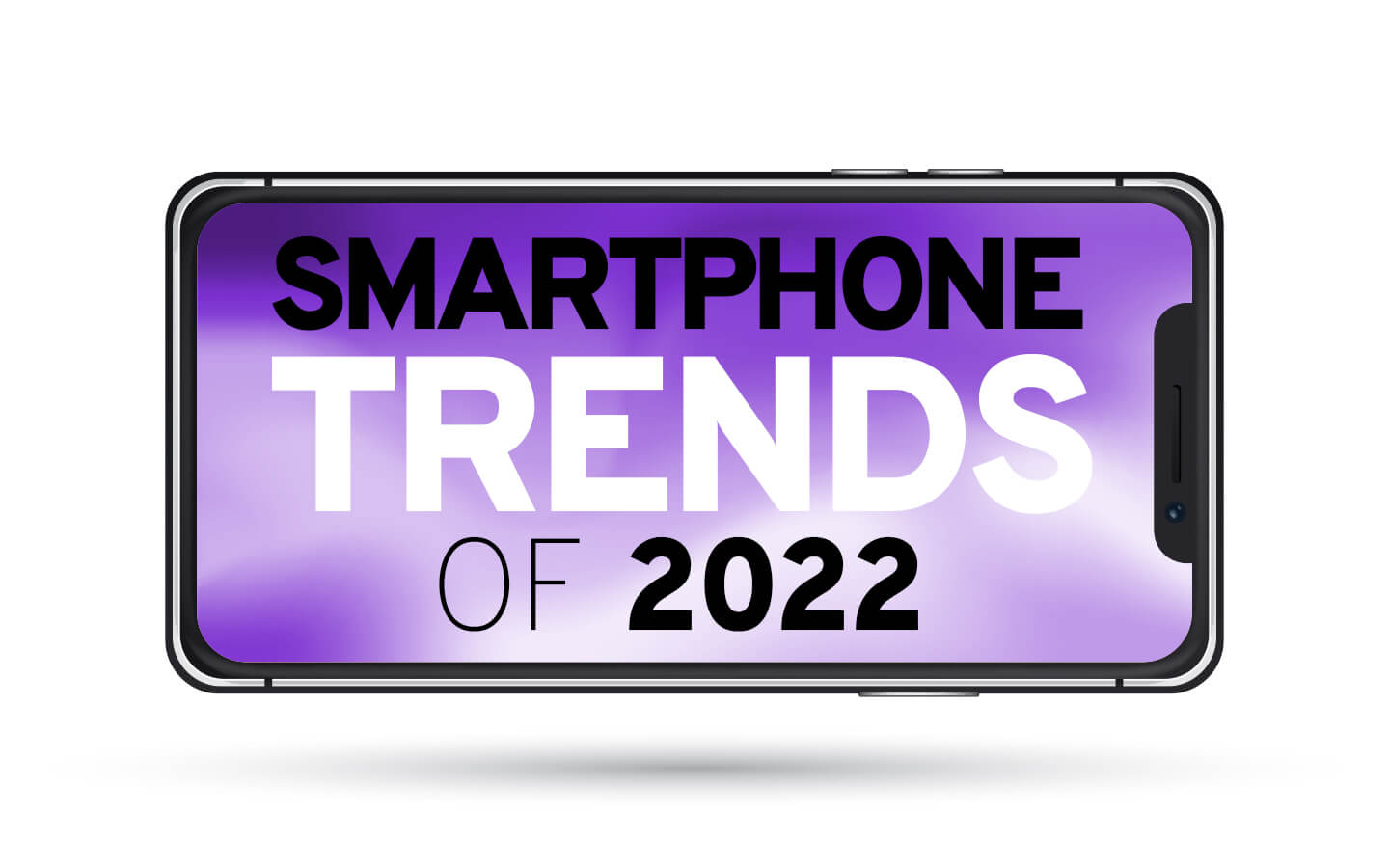
Remember when the first iPhone came out and everybody went crazy over the app that made it look like you were drinking a beer? That wasn’t that long ago. Since then, mobile phones have come a long way. Within the past 20 years or so, we went from simple devices that could only text and call to mini supercomputers that can be used for streaming movies, joining video conferences, cameras, and so much more.
While growth has slowed since the early 2010’s, the mobile industry continues to evolve every year. In 2021, we witnessed a push for more cities with 5G access, more cameras, and a rise in competition amongst smartphone manufacturers. As the new year unfolds, we reveal the top smartphone trends to continue to watch in 2022.
1. 5G
While 5G was initially rolled out in late 2019 into early 2020, it wasn’t all that common in North America until early 2021. But even then, coverage was limited, networks were congested, and speeds were far slower than the “100x faster than 4G” rates that were advertised by providers.
While progress has certainly been made, there is still a long way to go before 5G becomes the “revolutionary” network it was promised to be. That said, most newer devices have 5G capabilities built in, and other than Verizon, no US operators charge extra to use their 5G networks, so we can expect 5G to expand this year, especially with the recent conclusion of the FCC’s C-BAND auction, but experts agree there’s still a long road ahead for widespread 5G adoption.
2. MDM
As more businesses rely on the use of mobile phones and shared information in their workforces, the need for proper device and data management become even more important. Here are a few MDM-related trends we expect to see in 2022.
- Apple Business Essentials. Announced in 2021 and described as “a complete subscription that seamlessly brings together device management, 24/7 support and cloud storage”, Apple’s iOS-only IT management and support solution is expected to release in the Spring.
- Declarative MDM. Apple’s self-proclaimed “future of device management” aims to allow individual devices to be more autonomous and proactive to offer increased performance and scalability.
- Lower cost MDM UEM solutions. As more companies enter the market, competition is heating up and a number of lower cost MDM and UEM solutions are surfacing.
3. Security
As virtual workforces grow, IT teams and their resources are being stretched thin as they attempt to bridge the gaps in endpoint security. Here are some of the major priorities for CTOs and IT teams in 2022:
- Zero trust security and zero trust network access (ZTNA)
- Consolidating endpoint systems with unified endpoint management (UEM)
- Automated threat prevention through self-healing endpoint platforms
- Redefining endpoint management with AI and behavioral analytics
- AI and machine learning to battle ransomware
4. Device models (flip, nostalgia)
Over the past few years, devices have been getting bigger and bigger, with some “plus” models resembling small tablets. In 2021, some companies decided to dial that back a little by releasing “mini” models that are closer to the size of the smaller smartphones that were popular 5 years ago.
In 2022, we expect that same nostalgia to influence the form factors of upcoming models – multiple companies have released, or are planning to release flip and folding models inspired by the popular devices of the mid 2000’s.
5. Industry changes
Beyond devices themselves, the smartphone industry as a whole has been undergoing substantial changes that we think will continue into 2022 and beyond:
- Privacy. As we continue to unravel the potential that data holds, protecting personal (and corporate) information is essential. Last year, Apple made some major changes to applications’ and advertisers’ ability to track user data, and we expect more companies to follow suit as privacy concerns rise.
- Right to repair. For years, consumers and companies have been fighting over the right to repair their own devices. In 2021, President Biden formally backed the right to repair movement with the signing of an executive order that will change the way consumers buy and use smartphones.
- No more Blackberry. Despite holding a massive portion of smartphone market share in the 2010’s, as of January 4th, 2022, Blackberry devices and software have been officially discontinued.
